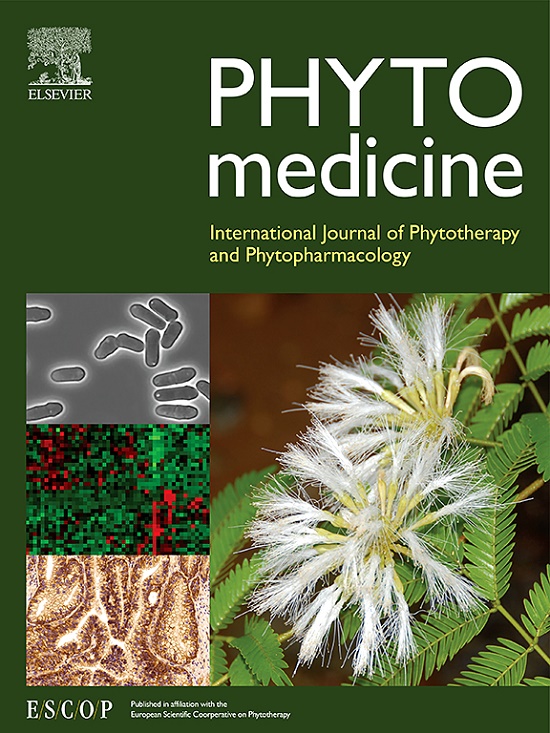Metabolomics based analysis reveals the therapeutic effects of Incarvillea arguta (Royle) Royle aqueous extract against alcohol-induced liver injury
IF 6.7
1区 医学
Q1 CHEMISTRY, MEDICINAL
引用次数: 0
Abstract
Background
Alcohol-induced liver injury (ALI) poses a significant threat to global human health. The Chinese Yi medicine Liangtoumao (LTM), which originated from the whole plant of Incarvillea arguta Royle (Royle), has been widely used by the Yi ethnic group to prevent and treat ALI and other liver diseases. However, its effectiveness and mechanisms are still under-researched.
Purpose
The objective of our research is to investigate the chemical composition of LTM aqueous extract, evaluate its potential therapeutic intervention effect on ALI, and explore its mechanisms in rat models.
Methods
The chemical components and constituents of LTM aqueous extract migrating to the blood were analyzed by UPLC-Q-TOF/MS. Sprague–Dawley rats subjected to chronic binge alcohol exposure were utilized to establish chronic ALI models and evaluate the therapeutic effects of LTM aqueous extract. Serum and spatial metabolomics analyses were used to investigate potential mechanisms.
Results
A total of 60 chemical components in LTM aqueous extract were identified, with 67 absorbed into the blood, including 29 original compounds and 38 metabolites. Treatment with LTM aqueous extract remarkably alleviated hepatic lesions in livers of ALI rats, improved liver function, reduced oxidative stress and inflammation. Serum metabolomics and hepatic spatial metabolomics identified 30 and 215 differential metabolites, respectively. Metabolic pathways of glyoxylate and dicarboxylate, glycerophospholipid, linoleic acid, taurine and hypotaurine, and cysteine and methionine were closely related to the hepaprotective effects of LTM.
Conclusion
Our research confirmed significant effects of LTM on ALI prevention and treatment for the first time. Metabolomic findings revealed that LTM significantly influences various aspects of lipid metabolism. This study supports expanded mechanism investigations of LTM and explores its possibility as a potential ALI therapy.

求助全文
约1分钟内获得全文
求助全文
来源期刊

Phytomedicine
医学-药学
CiteScore
10.30
自引率
5.10%
发文量
670
审稿时长
91 days
期刊介绍:
Phytomedicine is a therapy-oriented journal that publishes innovative studies on the efficacy, safety, quality, and mechanisms of action of specified plant extracts, phytopharmaceuticals, and their isolated constituents. This includes clinical, pharmacological, pharmacokinetic, and toxicological studies of herbal medicinal products, preparations, and purified compounds with defined and consistent quality, ensuring reproducible pharmacological activity. Founded in 1994, Phytomedicine aims to focus and stimulate research in this field and establish internationally accepted scientific standards for pharmacological studies, proof of clinical efficacy, and safety of phytomedicines.
 求助内容:
求助内容: 应助结果提醒方式:
应助结果提醒方式:


